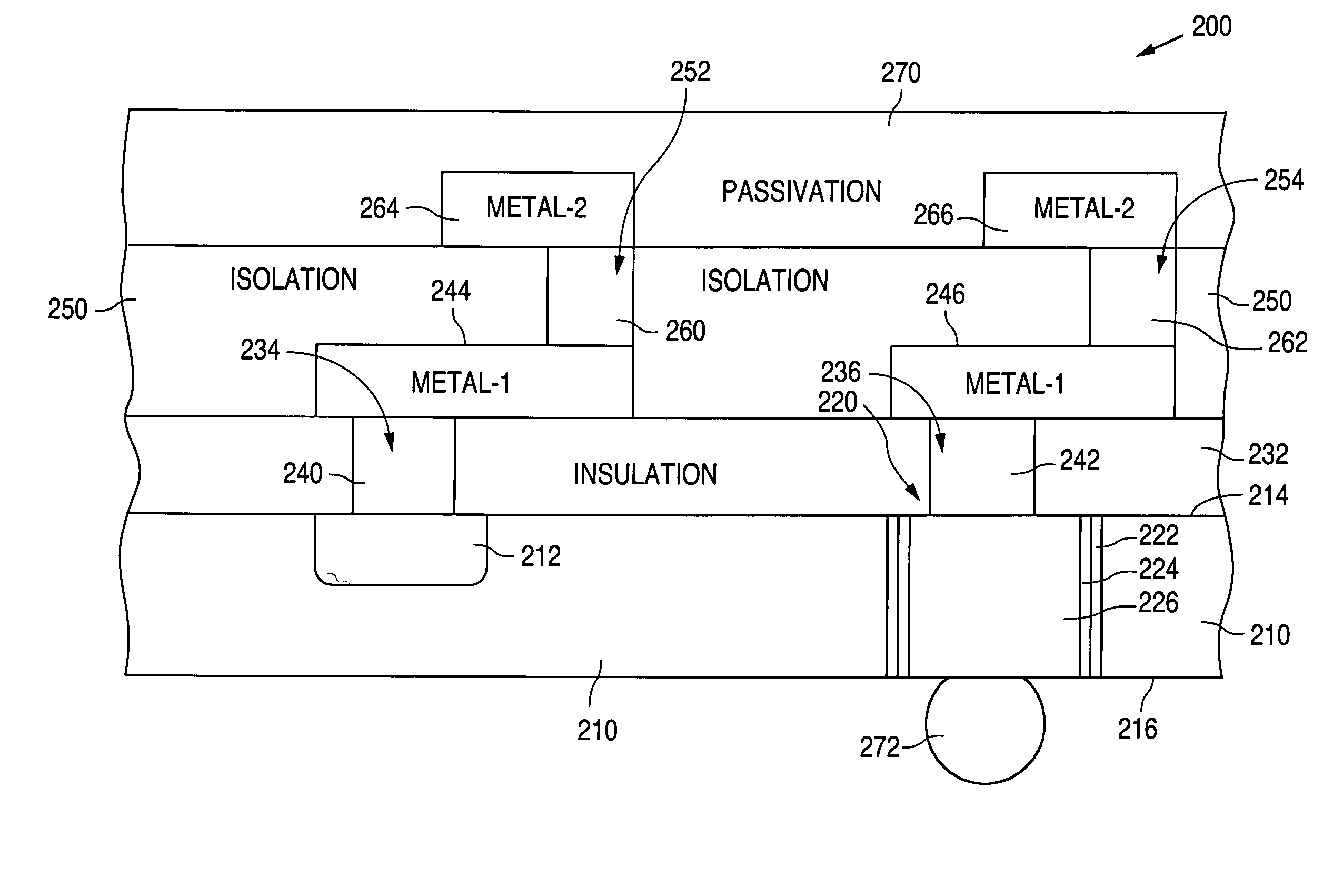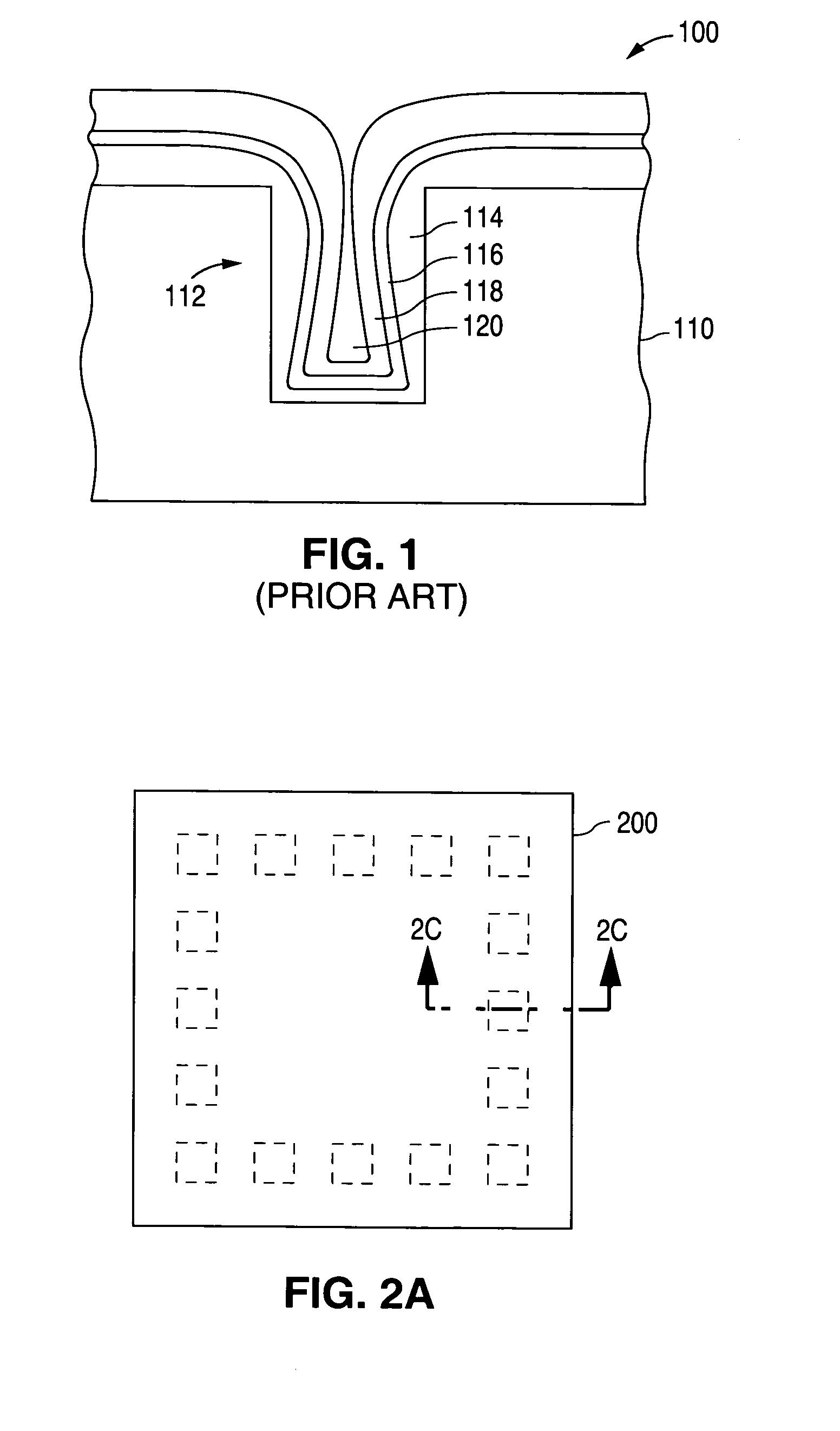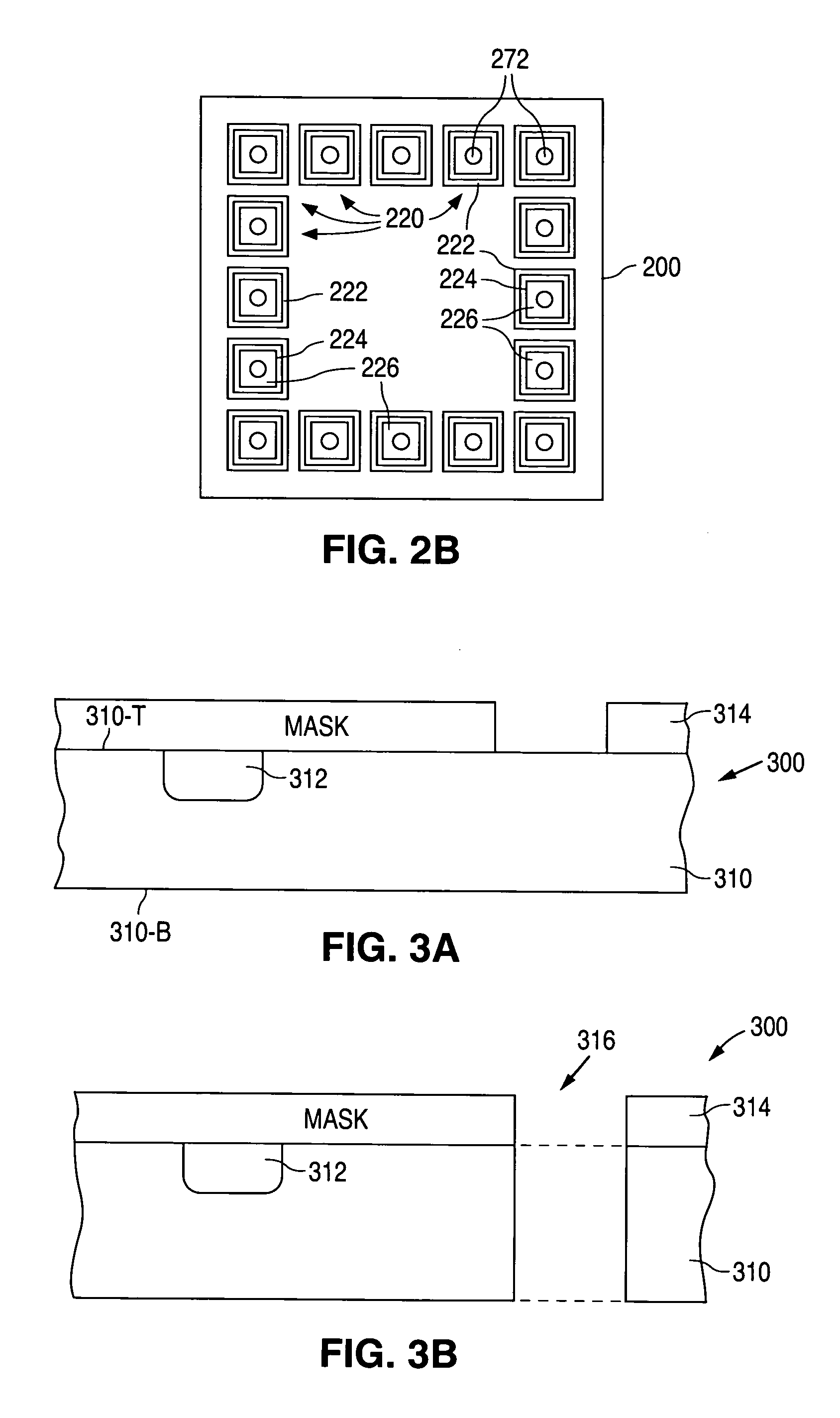Method of forming through-the-wafer metal interconnect structures
a technology of through-the-wafer metal and interconnect structure, which is applied in the direction of semiconductor devices, semiconductor/solid-state device details, electrical apparatus, etc., can solve the problems of increasing the cost of the wafer, difficult to form the barrier layer, and a significant amount of time for the dry etching process to form the hole through the wafer
- Summary
- Abstract
- Description
- Claims
- Application Information
AI Technical Summary
Problems solved by technology
Method used
Image
Examples
Embodiment Construction
[0019]FIGS. 2A–2C show a series of views that illustrate a semiconductor die 200 in accordance with the present invention. FIG. 2A shows a plan view of semiconductor die 200, FIG. 2B shows a bottom view of semiconductor die 200, and FIG. 2C shows a cross-sectional view of semiconductor die 200 that is taken along line 2C—2C of FIG. 2A.
[0020]As shown in FIGS. 2A–2C, semiconductor die 200 includes a substrate 210, and a doped region 212 that is formed in substrate 210. Substrate 210 has a top surface 214, an opposing bottom surface 216, and a number of holes 220 that extend from top surface 214 through substrate 210 to bottom surface 216. Each of the holes 220, in turn, has substantially anisotropic side walls. Further, substrate 210 has a crystallographic orientation.
[0021]Doped region 212, which is a part of a semiconductor circuit that is formed on substrate 210, can have the same or an opposite conductivity type as substrate 210. When substrate 210 and doped region 212 share the ...
PUM
 Login to View More
Login to View More Abstract
Description
Claims
Application Information
 Login to View More
Login to View More - R&D
- Intellectual Property
- Life Sciences
- Materials
- Tech Scout
- Unparalleled Data Quality
- Higher Quality Content
- 60% Fewer Hallucinations
Browse by: Latest US Patents, China's latest patents, Technical Efficacy Thesaurus, Application Domain, Technology Topic, Popular Technical Reports.
© 2025 PatSnap. All rights reserved.Legal|Privacy policy|Modern Slavery Act Transparency Statement|Sitemap|About US| Contact US: help@patsnap.com



